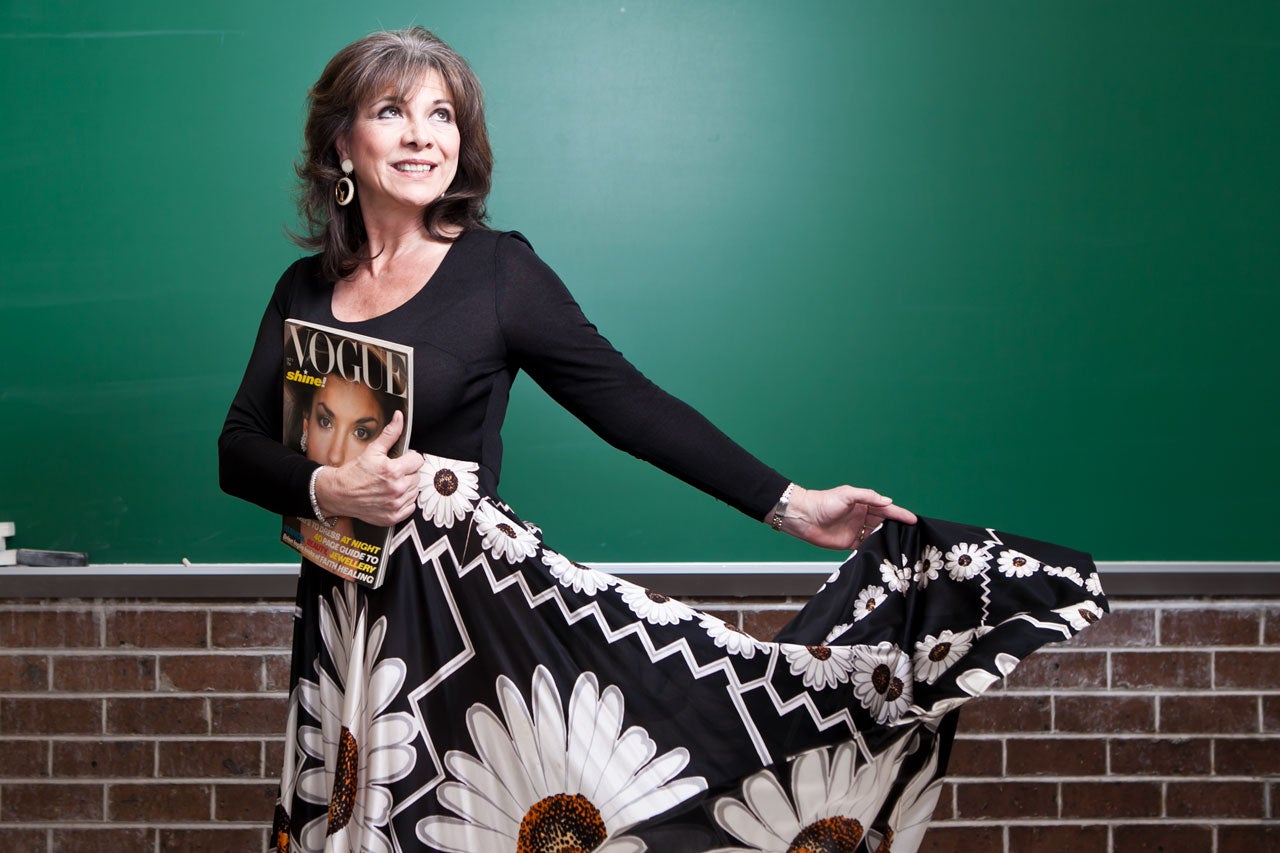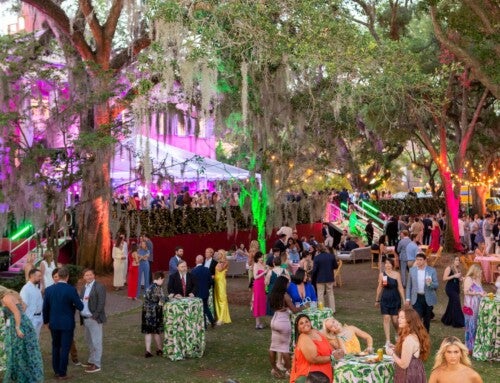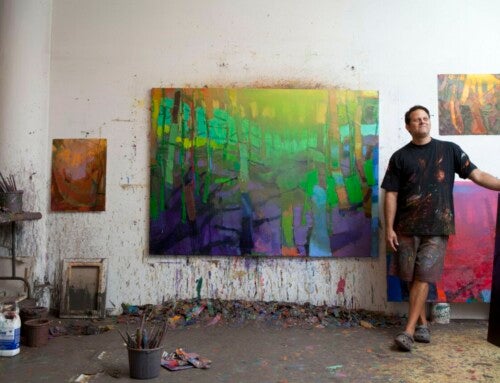As Heidi Klum has made us fully aware, in fashion, one day you’re in, and the next, you’re out.
That may be true, but Glenda Johnson Byars ’75 has been in fashion for a while now. In fact, she’ been in nearly every role in the industry at some point or another: model, photo stylist, makeup artist, fashion director.
 In the 1980s, the heyday of runway fashion, she was the fashion and public relations director for Saks Fifth Avenue, overseeing expensive runway shows involving over-the-top theatrics and celebrity. She returned to Charleston in the late 1990s to open the Saks Fifth Avenue on King Street, where she was manager of special events and public relations.
In the 1980s, the heyday of runway fashion, she was the fashion and public relations director for Saks Fifth Avenue, overseeing expensive runway shows involving over-the-top theatrics and celebrity. She returned to Charleston in the late 1990s to open the Saks Fifth Avenue on King Street, where she was manager of special events and public relations.
And, even now – as an adjunct faculty member in the College’s Department of Theatre and Dance – Byars is still in fashion: In addition to teaching Acting I and Introduction to Theatre, she teaches the History of Fashion and Manners and The Good, the Bad and the Ugly: 20th-Century Fashion.
With all the fashionistas in town for the Charleston Fashion Week, we decided to catch up with Byars and get her perspective on why it matters now.
What’s the don’t-miss event at Charleston Fashion Week this year?
I think the “must see” event is the the Art Institute of Charleston and Atlanta Student Show on Wednesday, March 15. I say this because it is always exciting to see fresh ideas from talented new designers presented on the runway. The show will feature designs of seven students from the Art Institute of Charleston and five from the Art Institute of Atlanta. Should be interesting – and maybe a look at a future star?
How do you describe the relationship between fashion and theater?
All things fashion reside in theater. For example, runway shows are often theatrical events – just take a look at the haute couture shows from spring 2017 or Victoria’s Secret Fashion Show. Fashion shows incorporate many of the same elements as a theatrical production: costumes (fashions), lights, music, actors (models), choreography, special effects, script (fashion show lineup) and dramatic structure (think: climax of play and finale of fashion show). In my years at Saks Fifth Avenue, we utilized gobos, disco balls, rose petals, elaborate sets (i.e., recreating sets from theater and movies), staging in unusual locations (e.g., the grand staircase at the New Orleans Museum of Art) or unusual runway configurations, masks, singers, dancers, musicians and, of course, the designers themselves.
I say that designers create, costumers interpret. Clearly, costumers create, too. But the costumer is responsible for making the characters identifiable. The costumer gives the visual signals that define the various characters. There’s a visual story that the costumer is telling, even on the most basic level: When an actor walks across the stage in a maid’s uniform, the audience immediately knows what her role is.
I think theater makes it clear that fashion is the most effective form of nonverbal communication. Fashion and theater are both mirrors of society with a home address on the pulse of time, place and attitude.
As a reflection of society and the times, what does fashion tell us about women’s history as we celebrate Women’s History Month?
It tells us a lot about how the attitudes of women have changed – both about themselves and their own roles – throughout history. The most obvious example of this the flapper style of the roaring ’20s, which was a direct result of World War I. The world changed when all the men went away to war, and women needed clothes they could move in. They couldn’t mess with that corset any more. Women had done men’s jobs, and they had money to buy their own cigarettes, their own dresses. The flapper was just rolling up in her economic time. This new ideal silhouette was also something of a girly protest of voluptuous curves of Edwardian women.
There are many more examples of fashion’s importance in women’s history, however. There are many, many women who have used fashion to advocate for women’s rights, for example. The first independent female dressmaker who used fashion to gain independence was Rose Bertin, dressmaker to Marie Antoinette. And female designers/entrepreneurs/early women’s rights advocates have also made history through fashion: Jeanne-Marie Lanvin, Madeleine Vionnet, Elsa Schiaparelli and Coco Chanel, to name a few. And then, of course, the women fighting for suffrage used fashion as a political statement and to further their cause.
Women have used fashion to empower themselves and other women throughout history.
Why does fashion matter today?
Today, fashion is much more tribal than ever before – clothes are identifiers. They tell us who is part of our “clan.” It’s become a subset of your culture – athletes, hipsters, professionals all have a fashion of their own. You know where you belong. It gives us a tribal affiliation.
It’s also important to the economy. According to, Fashion United, the global apparel market is valued at $3 trillion dollars and accounts for 2 percent of the world’s gross domestic product. The womenswear industry alone is valued at $621 billion. So, the industry is important to global economics.
Who is your favorite designer and why?
Zandra Rhodes. She is a textual artist with this 1960s/70s fantasy feel. She makes the texture of the fabric and the design part of her statement.




